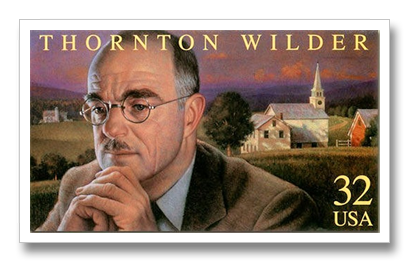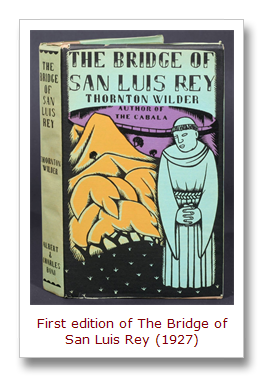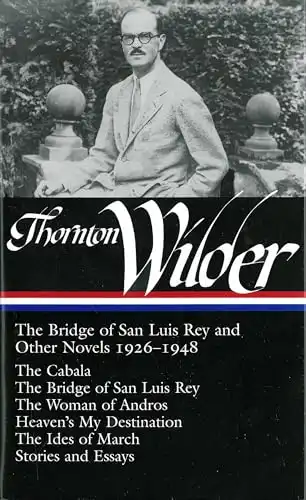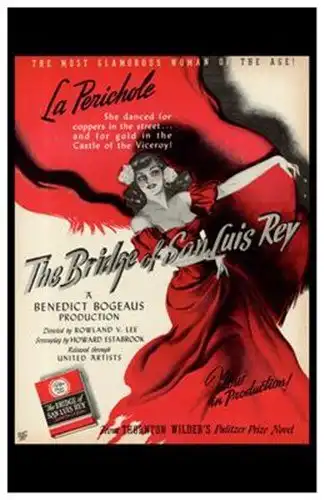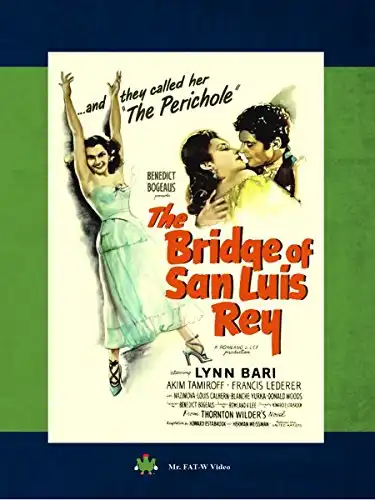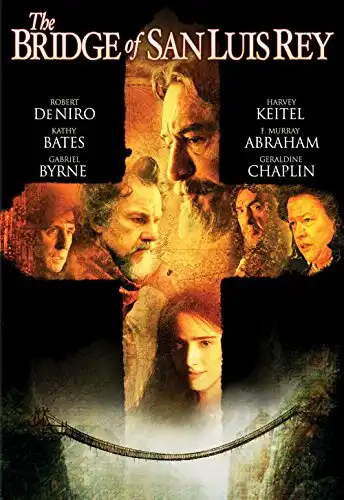The Bridge of San Luis Rey is the second novel by the great American writer Thornton Wilder (1897- 1975).
The first edition of the book was published by the Albert & Charles Boni company on November 3, 1927.
It’s set in Peru in the year 1714.
Early in the novel, on July 20, 1714, five people crossing an old bridge are killed when the bridge suddenly collapses.
A Franciscan monk named Brother Juniper happens to witness this tragedy. He wonders “Why did this happen to those five?”
There must be some reason, he thinks:
If there were any plan in the universe at all, if there were any pattern in a human life, surely it could be discovered mysteriously latent in those lives so suddenly cut off. Either we live by accident and die by accident, or we live by plan and die by plan.
Brother Juniper spends years compiling facts that might somehow answer his questions.
He talks to family members and friends of the victims, who came from various backgrounds and levels of society. He records what he learns and thinks in a series notebooks.
Ultimately, he spends six years “knocking at all the doors in Lima, asking thousands of questions,
filling scores of notebooks.” These are collected into one huge book.
The middle chapters of the novel tell us about the lives of the five people who were killed when the bridge collapsed.
They include:
– Doña María, a wealthy noblewoman who is estranged from her daughter Clara;
– Pepita a young woman who was raised in an orphanage run by the Abbess Madre María del Pilar and then essentially adopted by Doña María, partly to fill the void left when Clara left Peru and went to Spain;
– Esteban, a young man haunted by the death of his twin brother Manuel;
– "Uncle" Pio, the former manager of the famous actress Camila Perichole, whose career ended when she was disfigured by smallpox; and,
– Jaime, Camila’s son, who was traveling with Pio because Camila asked him to take care of the boy.
In the final part of the novel, we learn that Brother Juniper’s book was brought to the attention of Catholic Church officials and they convicted him of heresy for seeming to question or try to justify the mysterious ways of God.
They burn the book – along with Brother Juniper.
In the final pages of the novel, we learn that Camila has come to Lima to help the Abbess take care of sick people at her convent. By coincidence, Doña María’s daughter Clara has come to visit the Abbess.
Clara looks around at the desperately poor and sick people there. Then she ponders the lives of the five who died when the Bridge of San Luis Rey collapsed. She thinks:
“Even now…almost no one remembers Esteban and Pepita, but myself. Camila alone remembers her Uncle Pio and her son; this woman, her mother. But soon we shall die and all memory of those five will have left the earth, and we ourselves shall be loved for a while and forgotten. But the love will have been enough; all those impulses of love return to the love that made them. Even memory is not necessary for love.”
Finally, Clara comes to an oft-quoted conclusion; the famous quote that is the last line of the novel:
“There is a land of the living and a land of the dead and the bridge is love, the only survival, the only meaning.”
As a snotty young high school kid in the 1960s, I wasn’t really moved by The Bridge of San Luis Rey or its famous quotation.
Today, as an older and hopefully wiser married man, father and grandfather, I am.
* * * * * * * * * *
Comments? Corrections? Post them on the Famous Quotations Facebook page.
Related reading and viewing…


